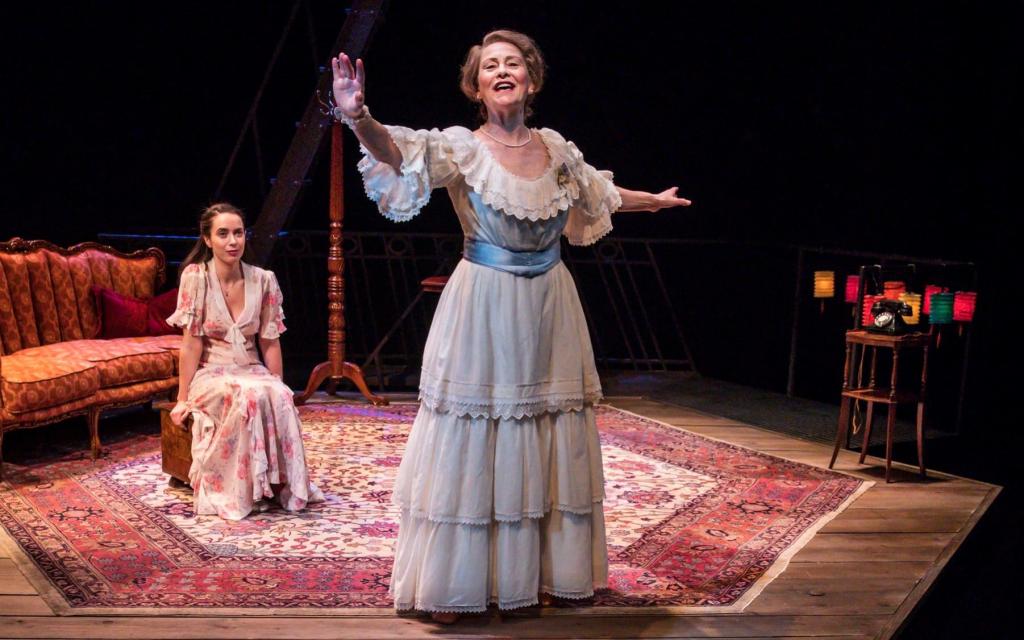
“When you look at a piece of delicately spun glass you think of two things: how beautiful it is and how easily it can be broken.”
The Glass Menagerie opens with such an emotionally charged language, setting the tone for the rest of the play, which is an elegiac portrait of deep and damaged characters. The symbolic title The Glass Menagerie refers to the collection of tiny glittering glass animals held dear by a super shy girl, one of the characters.
The play is about an ordinary American family left unsupported by a male parent in hard economic conditions. The four characters include Amanda Wingfield, her children, Tom Wingfield and Laura Wingfield, and a gentleman called, Jim O’ Connor. Amanda Wingfield is an overprotective, controlling and emotionally frustrated mother. Tom Wingfield is an aspiring poet who is extremely annoyed with his home life and mentally exhausted by an indefinite career at a shoe factory. Laura Wingfield with one leg slightly deformed is a pretty, shy and domestic girl. Jim O’ Connor is an amiable and sanguine gentleman caller.
The story of Wingfields is presented as a recollection of past memories from the life at St. Luis in 1930s. Amanda Wingfield marries a low and alcoholic man and then gets abandoned by him. She still fantasizes the girlhood charm and happiness of her past life. Her traumatic past has distorted her maternal vision of upbringing children. She encroaches on the dreams of Tom and Laura. She desperately wants her children’s dreams to be same as hers. As a single mother, she is very concerned about her adult children. She demands high from Tom and insists him to find a clean living marriage prospect for her disabled daughter, Laura.
Things take turn momentarily for good when Tom invites his young colleague, Jim O’ Connor for dinner at the demand of her mother. All the arrangements are carefully and happily made for the suitor. When he arrives, Laura realizes that it was the guy she was secretly infatuated with in high school. She shows him her Glass Menagerie. He praises her surprisingly different attitude and gradually encourages her to dance. Meanwhile, the table shakes and the horn of unicorn breaks as it falls. Jim manages to kiss her but makes a painful revelation that he is engaged to someone else. This adds burden to the panic of the dysfunctional family. Tom is blamed for tricking on his sister and mother. He leaves his family with the guilt of departing from Laura.
The emotional qualities of this play have the spirit to move the readers. One can truly feel about the characters’ situations. All the characters are quite understandable. Williams has drawn the characters from his personal life, that’s why they evoke original emotions. He was inspired by his sister Rose and makes a genuine transposition of her into Laura’s character. Her lovely fragility and beautifully modest appearance is such a delicate depiction in this work.
Her honey-sweet expression: “Oh, be careful – if you breathe, it breaks!” is priceless.
Amanda, though overbearing, is a courageous, caring and practical woman. Her character requires a plenty of attention to understand. The thing which makes her annoying and even hateful towards her children is that she constantly inquires about her daughter’s college life and son’s social life. In modern times, children should be given breathing space to think of their lives by own.
The qualities of escape literature can be traced in the character of Tom. He is adventurous by nature. His inspiration to write poetry is quite contrary to the needs of his family. That’s why he is so frustrated with his job at the shoe factory. He is trapped into doing something he hates. Moreover, the domineering attitude of her mother triggers his dream to escape the harsh realities of his life.
The psychological insight into the character’s personality is yet another recognizable achievement of the play. Laura’s inferiority complex confines her to the world of frozen glass animals and totally disconnects her from the outside world. Her low self-esteem is relatable to people, especially teenagers, of the actual world. Amanda’s obsession with romantic projections of the past at the cost of present maternal responsibilities is a true portrayal of many similarly troubled women of today. Tom’s mood-swinging is a good example of psychological disorder which results in rudeness towards her mother. All these three distinct characters suggest the author’s depth of knowledge about humans’ inner life.
This beautifully written play of pathos deals with a theme of pining false hopes on dreams and the concomitant brunt of tough realities. Tom yearns for adventurous life but cannot abandon his sister due to family love. Laura’s physical and mental debilitation makes her unable to support herself. The frustrating outcome of loving Jim puts her to the sideline. Amanda’s bitter temperament is a product her unfulfilled aspiration of high living. Jim O’ Connor is the only character with true hopes of a bright future.
The use of touching, tender and painful language to facilitate the memory play is beyond ordinary. I believe this is what makes the play absolutely ethereal. The play’s elegiac tone has deeply moved me. It is such an interesting use of poetic license. Its poetic language is what makes the book a heart-warming read.
The Glass Menagerie is a plaintive representation of family tensions in American society. It is a genius of Williams that he remakes his past through aesthetic lens and turns it into a delicate piece of work. I would recommend it because it helps to develop social awareness and build emotional intelligence by discussing the dynamics of a dysfunctional family, affections, relationships, innocence and difference between real and imagined life. It is worth reading for those who have a strong liking for pity, honesty and tragedy of relationships.




